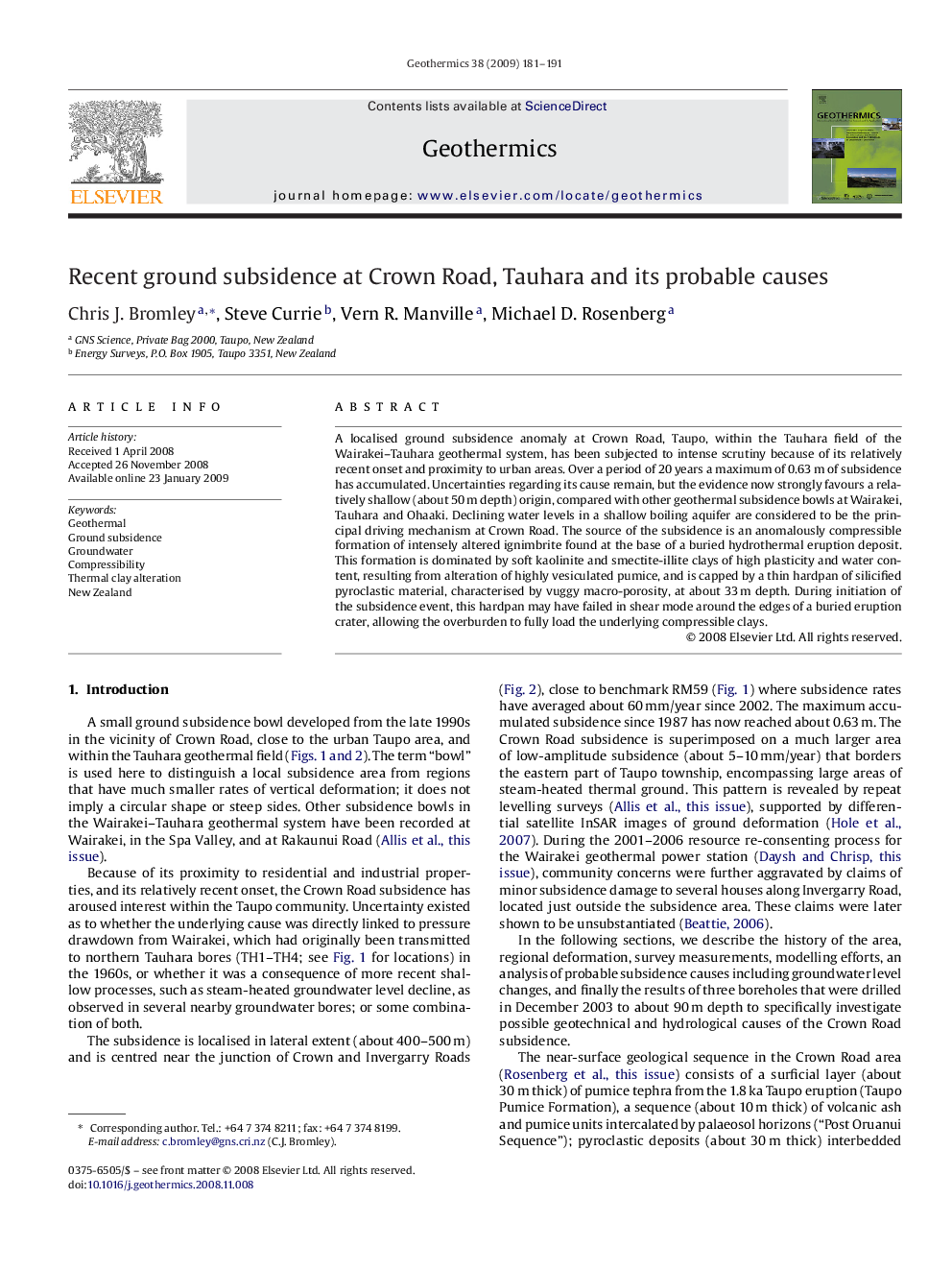| Article ID | Journal | Published Year | Pages | File Type |
|---|---|---|---|---|
| 1742574 | Geothermics | 2009 | 11 Pages |
A localised ground subsidence anomaly at Crown Road, Taupo, within the Tauhara field of the Wairakei–Tauhara geothermal system, has been subjected to intense scrutiny because of its relatively recent onset and proximity to urban areas. Over a period of 20 years a maximum of 0.63 m of subsidence has accumulated. Uncertainties regarding its cause remain, but the evidence now strongly favours a relatively shallow (about 50 m depth) origin, compared with other geothermal subsidence bowls at Wairakei, Tauhara and Ohaaki. Declining water levels in a shallow boiling aquifer are considered to be the principal driving mechanism at Crown Road. The source of the subsidence is an anomalously compressible formation of intensely altered ignimbrite found at the base of a buried hydrothermal eruption deposit. This formation is dominated by soft kaolinite and smectite-illite clays of high plasticity and water content, resulting from alteration of highly vesiculated pumice, and is capped by a thin hardpan of silicified pyroclastic material, characterised by vuggy macro-porosity, at about 33 m depth. During initiation of the subsidence event, this hardpan may have failed in shear mode around the edges of a buried eruption crater, allowing the overburden to fully load the underlying compressible clays.
